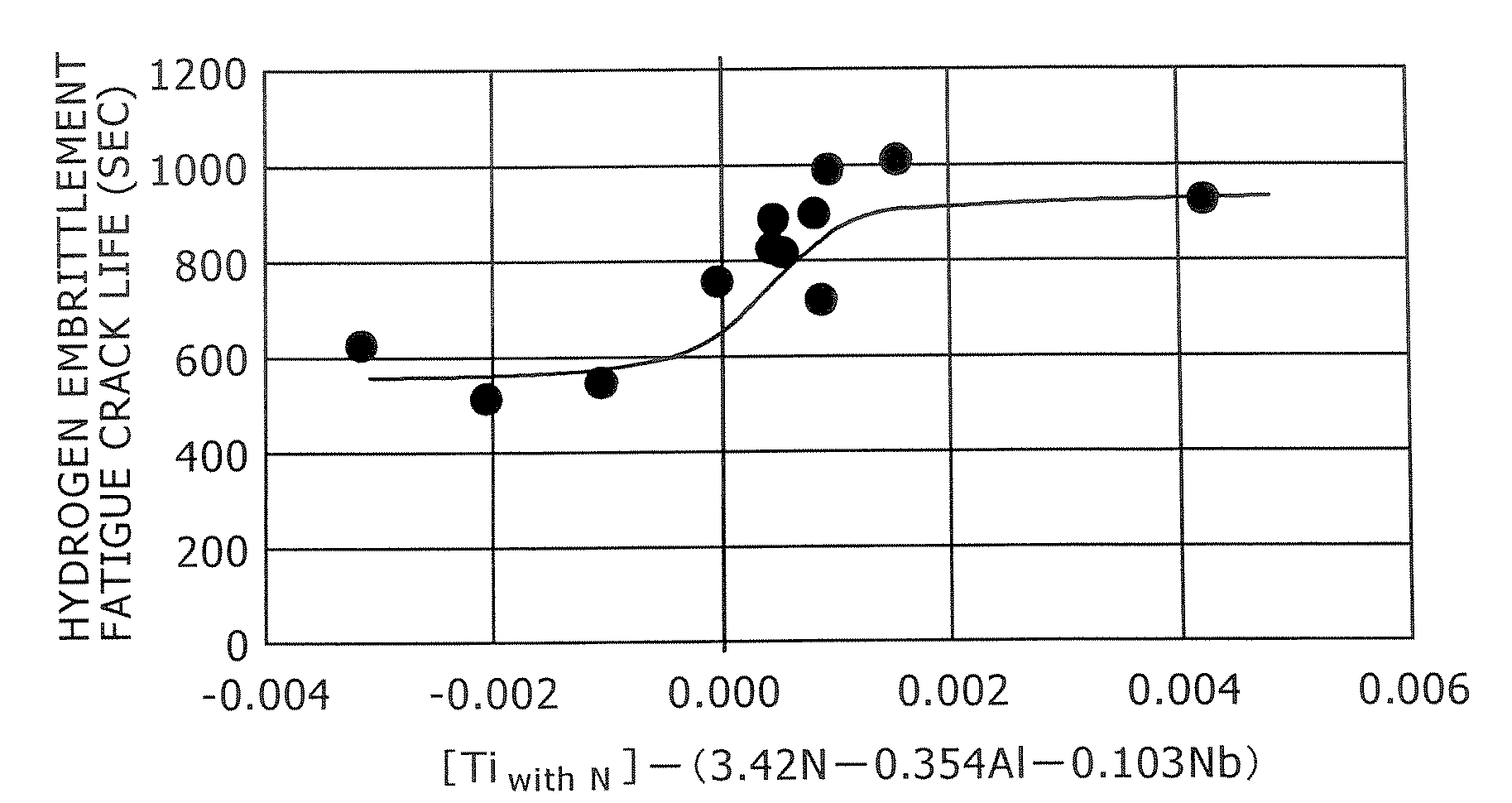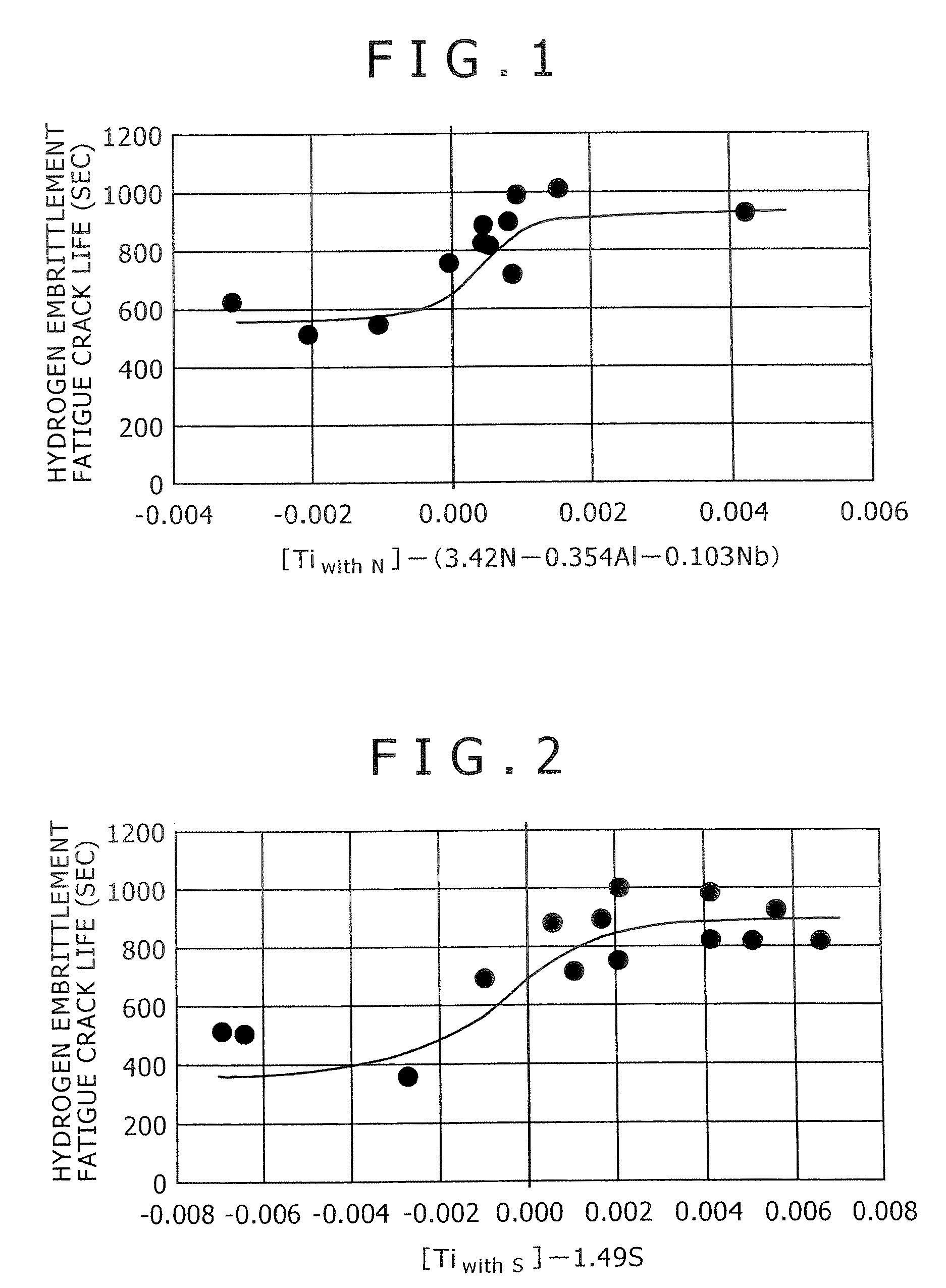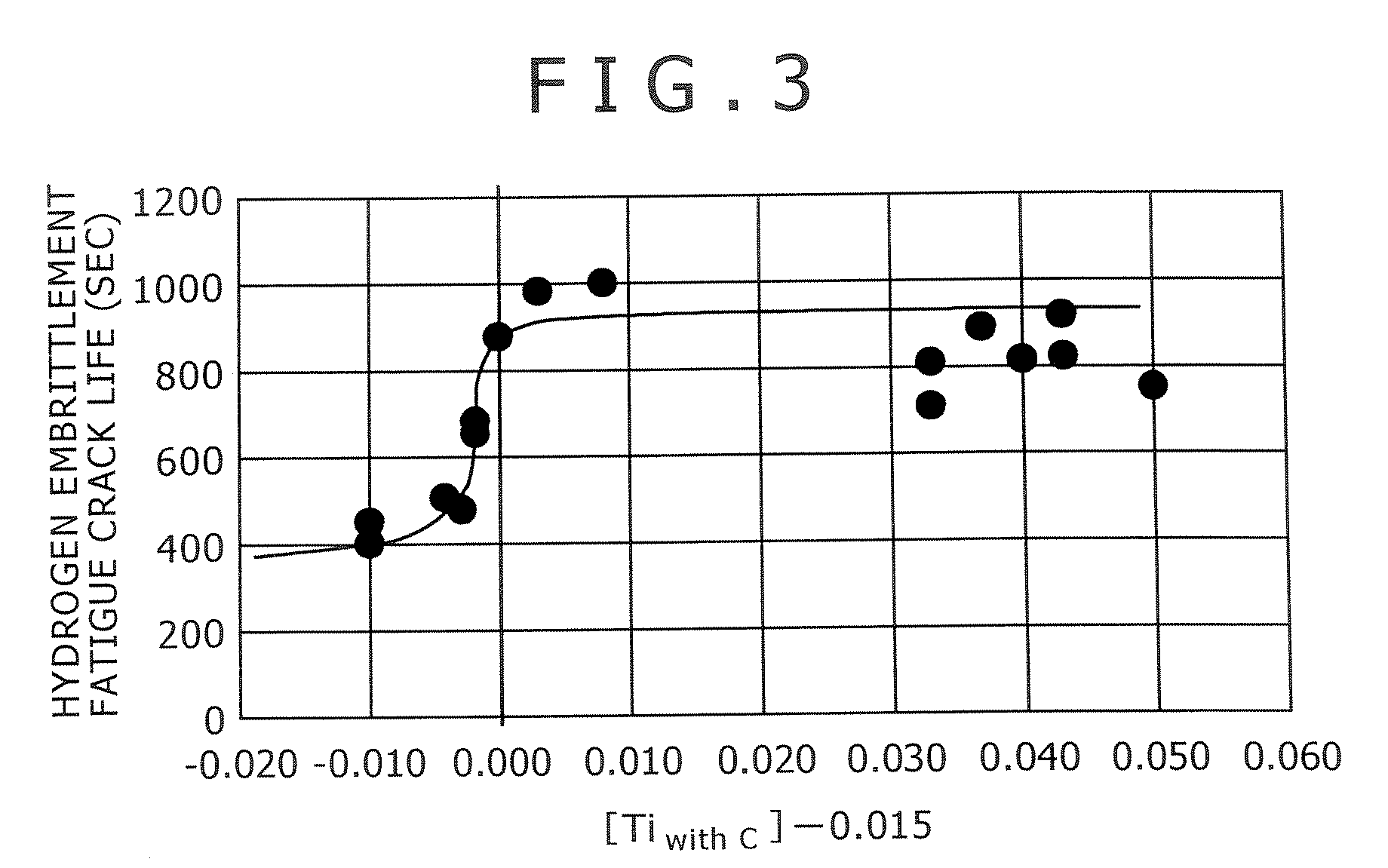Spring steel with excellent resistance to hydrogen embrittlement and steel wire and spring obtained from the steel
a technology of steel wire and spring, which is applied in the field of spring steel, can solve the problems of early breakage and increase in manufacturing cost, and achieve the effect of excellent resistance to hydrogen embrittlement and superior workability
- Summary
- Abstract
- Description
- Claims
- Application Information
AI Technical Summary
Benefits of technology
Problems solved by technology
Method used
Image
Examples
experimental example 1
[0076] 80 tons of steel having compositions specified in Table 1 (test steel Nos. A-L) were melted and continuously casted to produce 430 mm×300 mm blooms. Table 2 shows cooling rates (solidifying rates) between 1400 and 1500° C. during continuous casting. Each bloom was forged and rolled in a billet of 155 mm×155 mm, and was then hot-rolled into a wire having a diameter of 13.5 mm under the conditions specified in Table 2 below. In addition, each rolled steel (Nos. 1-10) was examined to make sure that ferrite decarburization did not occur therein.
[0077] Applying a method of electrolytic extraction to the wires, [Tiwith N], [Tiwith S], and [Tiwith C] were obtained.
[0078] Further, hydrogen embrittlement fatigue crack life was evaluated as follows.
[0079] [Hydrogen Embrittlement Fatigue Crack Life]
[0080] A wire was cut out to a proper length, and was heated at 925° C. for 10 minutes. The wire was then subjected to quenching with 70° C. oil, and was heated at 370° C. for 60 minutes a...
PUM
| Property | Measurement | Unit |
|---|---|---|
| Fraction | aaaaa | aaaaa |
| Fraction | aaaaa | aaaaa |
| Fraction | aaaaa | aaaaa |
Abstract
Description
Claims
Application Information
 Login to View More
Login to View More - R&D
- Intellectual Property
- Life Sciences
- Materials
- Tech Scout
- Unparalleled Data Quality
- Higher Quality Content
- 60% Fewer Hallucinations
Browse by: Latest US Patents, China's latest patents, Technical Efficacy Thesaurus, Application Domain, Technology Topic, Popular Technical Reports.
© 2025 PatSnap. All rights reserved.Legal|Privacy policy|Modern Slavery Act Transparency Statement|Sitemap|About US| Contact US: help@patsnap.com



